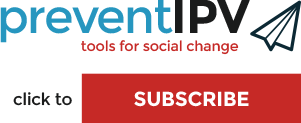Policy-Based Prevention
Policy-Based Prevention Approaches
| “In the past, the State Coalitions struggled with whether or not a policy could be a prevention approach. The model policy has now become a response and prevention approach. Having those conversations four years later about how a policy like this is prevention and what you can put [into it] to strengthen prevention has been innovative, interesting, exciting, and a learning process." |
Policy-oriented approaches addressing community- and societal-level risks have the potential to create population-level impact and produce cross-cutting effects on multiple forms of violence. This story features coalitions in California, Florida, and North Carolina who used policy-based approaches to have a community-level impact on IPV. The lessons described within highlight the importance of considering the context in which policy is developed and implemented, engaging partners with the right skills at the right time, and providing supports to intended audiences in order to accomplish policy goals.
Key Lessons Learned & Highlighted Strategies
Key Lesson #1: The political context, including existing policies and shifting priorities, can shape both opportunities and challenges for pursuing policy-based prevention approaches.
- The North Carolina coalition discovered that factors at both the national and systems levels affected the development, timing, and utility of their Model Campus Policy template and guidance. Having recently adopted new IPV prevention and response policies or had drafts that were close to approval, some campuses were no longer positioned to make changes using the template and guidance document. Because adopting and revising policies require multiple layers of approval, some campuses preferred not to invest the additional time and resources into further revisions. However, national attention to new guidance from the Department of Education’s Office of Civil Rights regarding the specific requirements of Title IX related to IPV survivors, driven in part by student efforts across the country such as Know Your IX, also created windows of opportunity for campuses to reconsider changing their policy.
- The passage of the 2016 California Healthy Youth Act created a window of opportunity for the California coalition with an increased demand by local school districts for prevention education, and for technical assistance to the state Department of Education in updating the K-12 Health Education Framework. Recognizing the attention that school systems were giving to the issue of bullying, the California coalition also created an informational brief on addressing bullying and adolescent dating abuse together, connecting the dots and leveraging opportunities to prevent multiple forms of violence.
- When two state mandates related to teen dating violence (TDV) education were passed in Florida, one requiring each school district to adopt and implement a dating violence and abuse policy, it allowed the Florida coalition to leverage their strengths and resources to support the rapid adoption of district TDV policies across the state through technical assistance and ongoing leadership and guidance, even after policies were in place.
Key Lesson #2: Policy-based prevention approaches benefit from having multi-sectoral partners with relevant expertise.
- In developing their Model Campus Policy, the North Carolina coalition benefited from having internal expertise, and from the input of a diverse group of external experts including attorneys, representatives from the Association of Title IX Administrators, representatives from a number of different types of universities, and experts in IPV/SV advocacy, prevention, and compliance and administration. This collective input from various perspectives strengthened the policy guidance.
- The California coalition also learned the importance of having the right internal expertise and/or partners actively engaged in their project. Since their policy work was geared towards creating change in school systems, they found it critical to have education organizations as partners, both for their expertise and their support in disseminating informational materials as respected professionals in the education community.
- The Florida coalition found it beneficial to partner with county-level domestic violence centers – in addition to state-level partners – to promote their TDV model policy. This helped create more sustainable support for effective TDV policies and expanded their efforts statewide, ensuring that each school district had access to training and support to implement existing policy.
Key Lesson #3: When developing policy guidance and tools for particular audiences, additional support is often needed to help them fully utilize the materials.
- Although they initially set out to develop a policy template specific to IPV for campuses, the North Carolina coalition soon learned through conversations with partners that campuses would be more likely to use such a tool if it was broader in scope – including sexual violence and stalking – and included accompanying guidance and on how to use it. They also realized that they must offer technical support around implementation and created a website to support those efforts.
- The Florida coalition realized that in order for school administrators to use their recommendations for implementing the state TDV policy, they first had to help district employees understand the requirements of the policy. As a result, local domestic violence centers worked to identify the training and capacity-building needs of each school district across Florida, and provide tailored technical assistance.
- When the California coalition found that their policy brief was limited in its intended reach, they leveraged TDV Awareness and Prevention Month (February) to boost the dissemination of their policy publications, including a mailing to 200 domestic violence organizations. They found that seeking out complementary activities and initiatives could help them achieve their overarching goals.
Tools for Adaptation
- ModelCampus: Title IX Action Guide – Online tool for intimate partner violence prevention and response by the North Carolina Coalition Against Domestic Violence
- (June 2015) by the North Carolina Coalition Against Domestic Violence
- (March 2018) by the North Carolina Coalition Against Domestic Violence
- (March 2018) by ERT Services, LLC - NCCADV supported the evaluation of this unique campus-based resource to examine the impact it has on campus climate and social norms around violence toward others.
- Brochure: (CVRC)
- Infographic: (CVRC)
- Brochure:
- Florida Department of Education Model Policy Against Teen Dating Violence or Abuse
- Implementation Guide for the Florida Department of Education Teen Dating Violence or Abuse Model Policy by the Florida Coalition Against Domestic Violence
- Resources for Educators from the Florida Coalition Against Domestic Violence
- from the Florida Coalition Against Domestic Violence and Florida Department of Education
- Teen Dating Violence Prevention Policies from the California Partnership to End Domestic Violence
- Toolkit for Education Leaders: Your Campus Can Be Ready by the California Partnership to End Domestic Violence
- Your Campus Can Be Ready explainer video and infographic from the California Partnership to End Domestic Violence
- Policy Brief: Promoting Healthy Relationships for Adolescents: Board Policy Considerations (August 2014) by the California School Boards Association and the California Partnership to End Domestic Violence
- Teen Dating Violence Prevention through Policy Change: Opportunities for advocacy at the local and state levels from the California Partnership to End Domestic Violence Policy Recommendations for Schools to Prevent Adolescent Dating Abuse
- Creating Healthy School Climates That Address Adolescent Dating Abuse from the California Partnership to End Domestic Violence
- Addressing Bullying and Adolescent Dating Abuse: Supporting Healthy Relationships in Schools from the California Partnership to End Domestic Violence
Highlighted Projects
- California Partnership to End Domestic Violence
- Florida Coalition Against Domestic Violence
- North Carolina Coalition Against Domestic Violence
Related Resources from DELTA FOCUS Grantees
- Sample School Discrimination/Harassment Policy from the Ohio Domestic Violence Network





